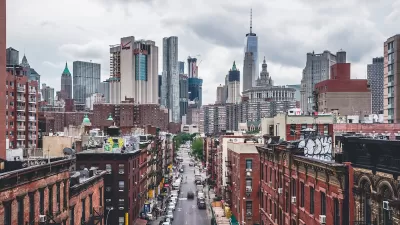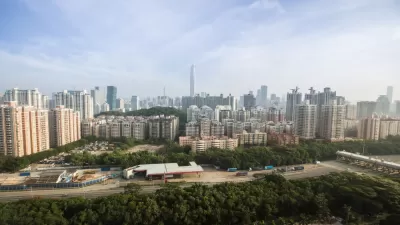Cities are undergoing major changes in terms of demographics and development patterns. How cities will react to these changes remains up in the air.
"We have more big cities now than at any time in our history. In 1900, only 16 had a population of one million; now it's more than 400. Not only are there more of them, they are larger than ever. In 1851, London had two million people. It was the largest city in the world by a long way, twice the size of Paris, its nearest rival."
"That version of London would seem like a village now. By the official definition, London has getting on for eight million people, but in practical terms, it's a city of 18 million, straggling most of the way from Ipswich to Bournemouth in an unforgiving tide of business parks and designer outlets, gated housing and logistics depots. There might be fields between them, but they are linked in a single transport system and a single economy. Those villages in Suffolk that are close enough to a railway station to deliver you to Liverpool Street in under 90 minutes are effectively as much a part of London as Croydon or Ealing and they have the house prices to prove it. The other big conurbations - from Birmingham to Manchester and Glasgow, names for cities that spread far beyond the bounds of political city limits - can be understood in the same way."
"The future of the city has suddenly become the only subject in town. It ranges from tough topics such as managing water resources, economic policy, transport planning and law enforcement to what is usually presented as the fluffier end of the scale, such as making public spaces people want to spend time in. It's about racial tolerance and civilised airports, the colour of the buses and the cost of the fares on them. Unless you have some kind of framework to make sense of all that, the city can seem to be about so many diverse things that it is about everything and nothing."
FULL STORY: Cities on the edge of chaos

Alabama: Trump Terminates Settlements for Black Communities Harmed By Raw Sewage
Trump deemed the landmark civil rights agreement “illegal DEI and environmental justice policy.”

Planetizen Federal Action Tracker
A weekly monitor of how Trump’s orders and actions are impacting planners and planning in America.

The 120 Year Old Tiny Home Villages That Sheltered San Francisco’s Earthquake Refugees
More than a century ago, San Francisco mobilized to house thousands of residents displaced by the 1906 earthquake. Could their strategy offer a model for the present?

In Both Crashes and Crime, Public Transportation is Far Safer than Driving
Contrary to popular assumptions, public transportation has far lower crash and crime rates than automobile travel. For safer communities, improve and encourage transit travel.

Report: Zoning Reforms Should Complement Nashville’s Ambitious Transit Plan
Without reform, restrictive zoning codes will limit the impact of the city’s planned transit expansion and could exclude some of the residents who depend on transit the most.

Judge Orders Release of Frozen IRA, IIJA Funding
The decision is a victory for environmental groups who charged that freezing funds for critical infrastructure and disaster response programs caused “real and irreparable harm” to communities.
Urban Design for Planners 1: Software Tools
This six-course series explores essential urban design concepts using open source software and equips planners with the tools they need to participate fully in the urban design process.
Planning for Universal Design
Learn the tools for implementing Universal Design in planning regulations.
Clanton & Associates, Inc.
Jessamine County Fiscal Court
Institute for Housing and Urban Development Studies (IHS)
City of Grandview
Harvard GSD Executive Education
Toledo-Lucas County Plan Commissions
Salt Lake City
NYU Wagner Graduate School of Public Service





























